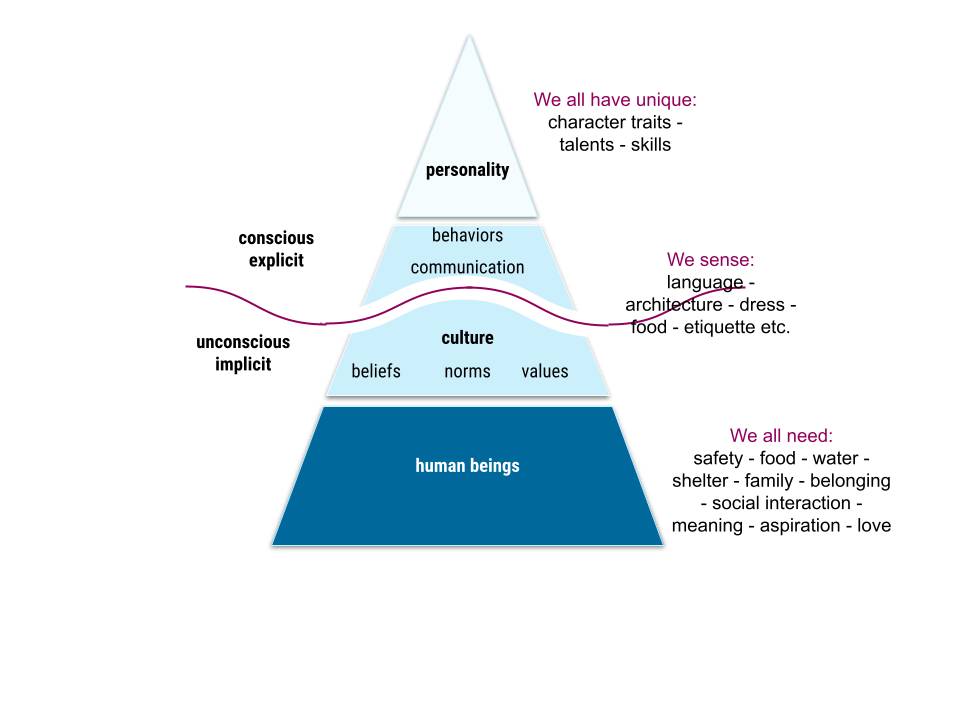Culture: definition and relevance
Culture: definition and relevance
Definitions of culture
- As human beings we all strive for the very same things in life and culture is the way we, as a group of people, have secured such basic needs. Culture provides a sense of belonging and identity.
- According to Prof. Hofstede, culture is the collective programming of the human mind.
- Mulholland describes culture as a set of shared and enduring meaning, values and beliefs that characterizes national, ethnic or other groups, and orient their behavior.
- Or simply put by Trompenaars: culture is the way in which a group of people solve problems and reconcile dilemma's.
Culture explained in a visual
Visual below: explanation of how culture (group) is related to personality (individual) and basic human needs we all share (all people). It also shows how some elements of culture are conscious and explicit (and for a large part visual) and some elements are more hidden, implicit, subconscious.
[text continues below visual]

Cultural Layers
In defining someone's cultural background we can detect many layers of culture and subcultures:
- national
- ethnic
- religion
- region
- gender
- age
- class
- professional
Every person has a different cultural mix which means we have to take a closer look at their cultural backgrounds and not jump into stereotypes too quickly.
Stereotypes
Speaking of which, this is a sensitive topic to many people and understandably so. Stereotypes are dangerous concepts when negative judgements are attached to it. But there can be merit in some stereotyping when it is mostly used to manage expectations and as a way to adopt appropriate behavior.
For example, if you understand that the Dutch are direct in their communication because they look for clarity, it makes it less (!) difficult to accept. If we turn this statement around by saying that the Dutch are usually indirect in their speech, and you start to laugh, then you know that the stereotype is probably true..
Organizational culture
An organizational (company) culture can transcend national boundaries and as such, align people who either share a professional culture or adopt the same values and work practices. It can serve as a strong connector in international companies and teams. It is important, however, to make sure that values are understood and applied properly by all members of the group, since some values have different meanings in different cultures.
Need support?
- Mail us at support@spotonlearning.nl
- Use chat/mail to contact us
- Check the FAQ's
About us
Spot On Learning helps international organisations with international crews and teams learn faster.